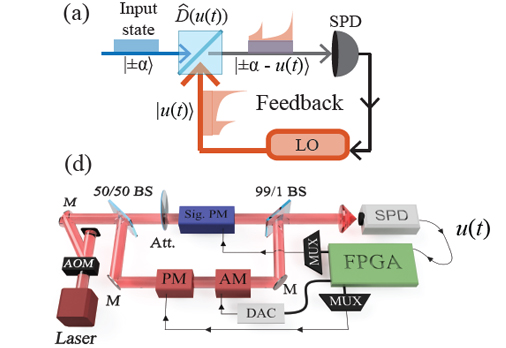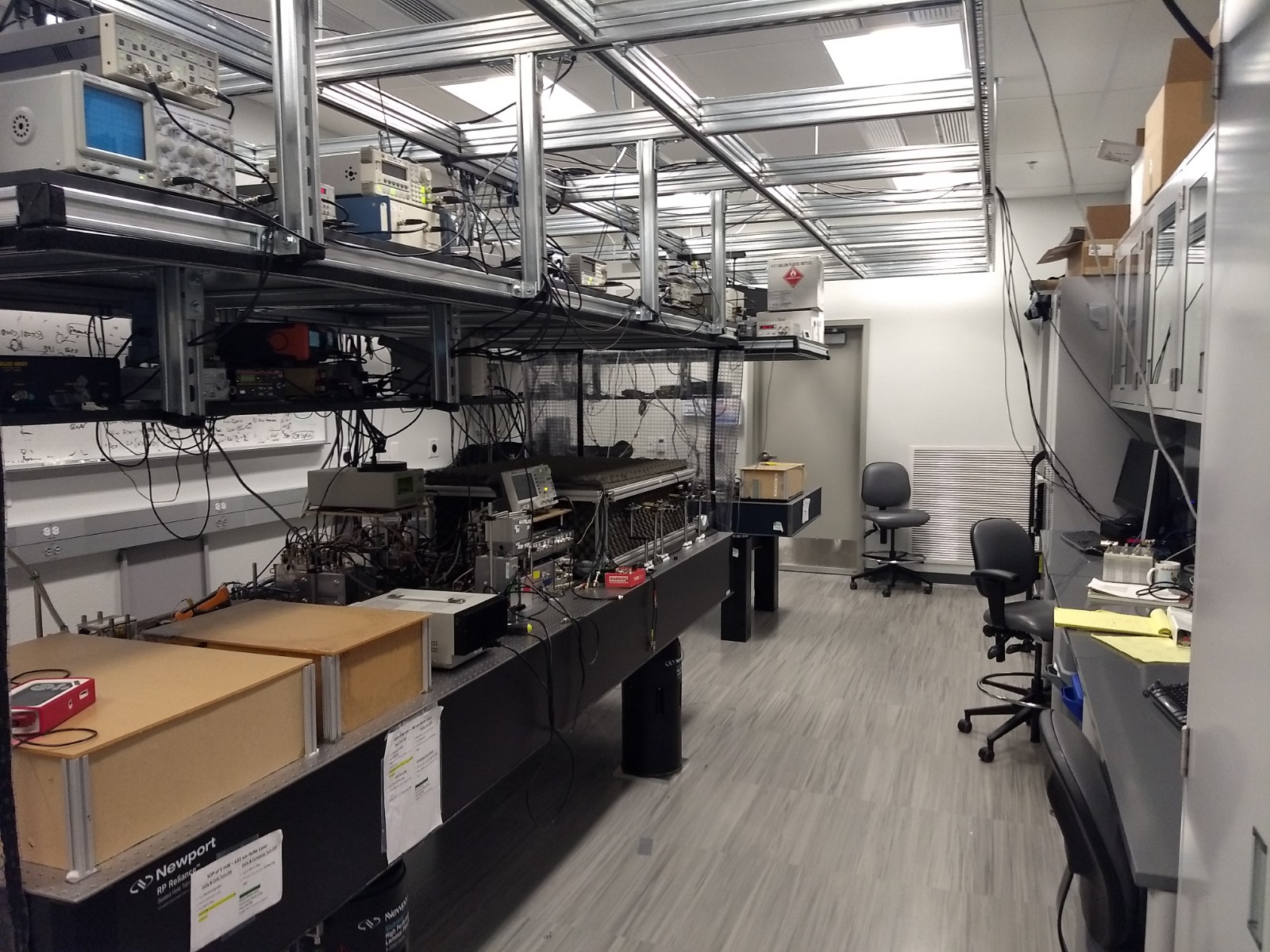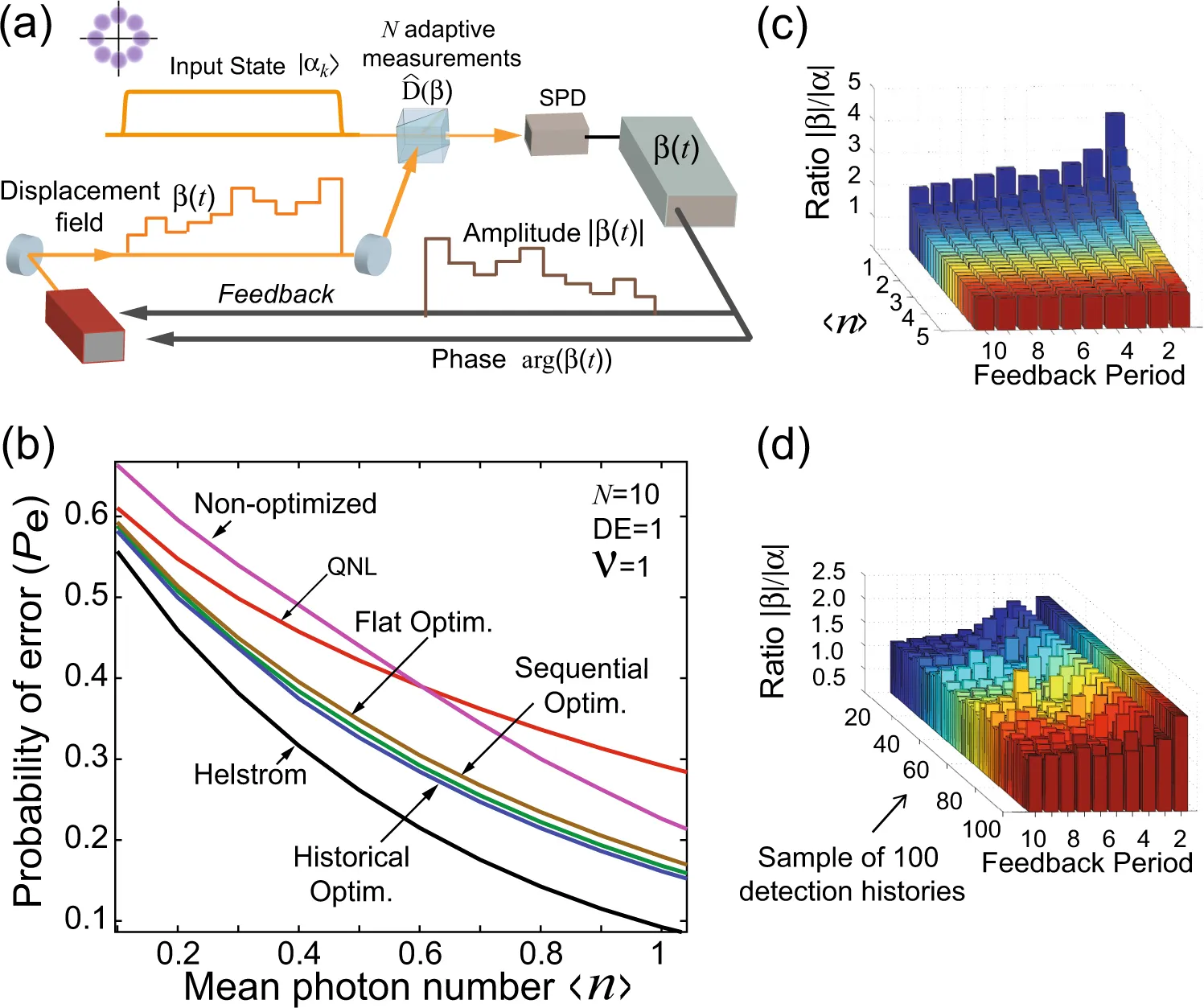 Coherent states have intrinsic quantum noise that overlaps among different states. This noise does not allow any deterministic measurement to perform discrimination with total certainty. This limits how well we can decode the informaiton encoded in nonorthogoal coherrent states, and impact the maximum amount of information that can be transmitted in communication. On the other hand, the nonorthgonality of states are central for quantum key distribution to ensure secure communications, and nonorthogonal coherent states can maximize amount of informaiton lossy channels. (a) Generalized quantum measurement for quantum state discrimination. (b) Experimental demonstraiton.
Coherent states have intrinsic quantum noise that overlaps among different states. This noise does not allow any deterministic measurement to perform discrimination with total certainty. This limits how well we can decode the informaiton encoded in nonorthogoal coherrent states, and impact the maximum amount of information that can be transmitted in communication. On the other hand, the nonorthgonality of states are central for quantum key distribution to ensure secure communications, and nonorthogonal coherent states can maximize amount of informaiton lossy channels. (a) Generalized quantum measurement for quantum state discrimination. (b) Experimental demonstraiton.
Quantum Measurement Laboratory
We investigate different measurement strategies of nonorthogonal coherent phase states to achieve sensitivities beyond what is possible with conventional measurements performing phase-sensitive detection, such as heterodyne measurement. These nonconventional receivers have a large potential for quantum and coherent communications, and can provide insigth into the limits of information transfer under realistic conditions of real communication channels with with losses, noise and imperfect devices.


Quantum measurements of optical modes enable technological advancements across communications, metrology, sensing, and imaging. Optimized quantum measurements (right) based on quantum feedback in general provide means to increase accuracy as the measurement progresses within the input optical mode. Globally optimized measurements, measurement that optimize the parameters considering the pass and future settings simultaneously, provide the highest sensitivities by construction. We have demonstrated these measurements for the discrimination of multiple nonorthogonal states of light providing the most sensitive detection of laser light at the single photon level.
